
David Muñoz-Rojas
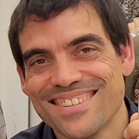
Hana Uršič
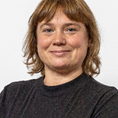
Marin Alexe
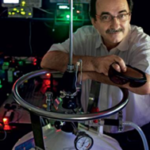
Florian Libisch
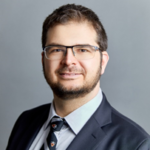
Daniel Primetzhofer
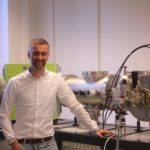
Nicolas Godard
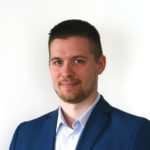
Sascha Sadewasser
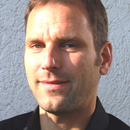
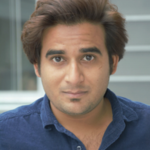
Biographies & Research interests
David Muñoz-Rojas
David Muñoz-Rojas is a research Scientist at the Laboratoire des Matériaux et du génie physique (LMGP) located in Grenoble. His research work focuses on the use and development of cheap and scalable chemical synthetic approaches for the fabrication of novel functional materials for electronic and optoelectronic applications. Thus, the techniques are mainly focused on electrochemistry, low temperature hydrothermal reactions, MOCVD (MetalOrganic Chemical Vapour Deposition) and a novel atmospheric atomic layer deposition approach which is currently being developed in the lab.
In terms of materials, (novel) oxides based on earth abundant elements mainly Cu, and hybrid nanomaterials are investigated in his projects. The main targeted applications of mentioned techniques are photovoltaics, lithium batteries, transparent conducting materials; and electronics such as TFTs, oxide-based transparent electronics. A full list of his publications is available on: https://sites.google.com/site/workdmr/publications
In his talk, he will introduce “Spatial Atomic Layer Deposition (SALD)” and will give an overview of the possibilities that this exciting technique offers and the current applications as well. This technique is a recent variant of ALD that offers fast processing, even at atmospheric pressure, while preserving the unique assets of ALD, namely, precise thickness control down to the nanometer, high-quality films even at low temperatures, and unique conformality. As a result, SALD is ideal for applications requiring high throughput at low cost, such as new generation photovoltaics, LEDs or packaging. In particular, the SALD approach based on close-proximity deposition heads is highly versatile since it can be easily customized by proper design of the deposition heads and because the deposition takes place in the open air without the need of any deposition chamber. Also, he will present the developments on close proximity SALD which is currently carrying out at LMGP.
Hana Uršič
Hana Uršič is a researcher in the Electronic Ceramics Department at Jožef Stefan Institute, Ljubljana, Slovenia and an associate professor at the International Postgraduate School. Her research topics include lead-based and lead-free ferroelectric, piezoelectric and electrocaloric ceramics and films, multicaloric materials, multiferoics, atomic force microscopy, and aerosol deposition technology. She is the author of 96 scientific publications, 2 review papers, 5 book chapters and European, Chinese and US patents. She led 13 national and international projects (and bilateral projects) and she was active in the networks EU ERA-NET, KET4, COST. Her papers have been cited more than 2100 times and have an i10 index of 56 and an h-index of 23. A full list of her publications is available on: https://bib.cobiss.net/bibliographies/si/webBiblio/bib201_20220510_140506_26468.html
She will present “Aerosol deposited thick films” in her talk.
Marin Alexe
Marin Alexe has been appointed as Chair of Functional Materials at the University of Warwick after spending about 18 years at the Max Planck Institute of Microstructure Physics-Halle (1996-2013). He has received the PhD degree from the Institute of Atomic Physics Bucharest in 1995. His research interest is physics and engineering of ferroelectrics, complex oxide thin films for information technology and integration of functional materials for oxide electronics. He has published more than 300 papers and 2 books and he has an h-index of 61. In the last five years he has given more than 30 invited talks and lectures at international meeting and conferences. He was recently awarded Wolfson Research Merit and Theo Murphy “Blue Sky” Awards of the Royal Society as well as Alexander von Humboldt research Award. A list of his publications is available on: https://scholar.google.de/citations?user=E8iOHbwAAAAJ&hl=en
In his talk he will speak about “Induced functionalities by symmetry breaking”.
Florian Libisch
Florian Libisch is a theoretical solid-state physicist at the TU Wien in Vienna, Austria. He is an associate professor at the Institute for Theoretical Physics
at TU Wien. His research focuses on the simulation of realistic nanodevices including strain, edges, defects, and substrate interactions. Quantum transport is described by a tailored Green’s function approach, enabling the simulation of large-scale structures (up to 1µm 2 ), and direct quantitative comparison to STM measurements [1], phonon renormalization in moiré superstructures [2] or photoluminescence of single photon emitters [3]. Embedding approaches [4] allow combining different levels of theory within one simulation, enabling the high-level modelling of local excitations in close comparison to the experiment.
A list of his publications is available on: https://scholar.google.com/citations?user=F-aVF2QAAAAJ&hl=en
In his talk he will introduce “Optical properties of transition metal dichalcogenides: single-photon emitters and strain”.
Daniel Primetzhofer
Daniel Primetzhofer is a professor, director of the Tandem Laboratory – National Accelerator Infrastructure and Head of Ion Physics Research Group in the division of Applied Nuclear Physics in the Department of Physics and Astronomy at the Uppsala University. In his research group he works on applied questions such as understanding and optimizing processes in materials for smart windows & nanoelectronics focused on advanced in-situ and in-operando analysis but also fundamental questions such as non-adiabatic phenomena in solids. Energetic ion beams are his preferred probes. As director of the tandem laboratory, he aims to provide and develop tools for ion beam-based research meeting demands in many research fields; from basic physics to life sciences. Until now, he has published more than 120 publications in SCI-journals. A list of his publications is available on: https://www.researchgate.net/profile/Daniel-Primetzhofer/publications
He will talk about “Accurate composition depth profiling of light elements in thin films using ion beams “.
Nicolas Godard
Nicolas Godard is a material development engineer in the Piezo and Protection Devices business group at TDK Electronics in Deutschlandsberg, Austria, since October 2020. He carried out his PhD in Chemistry in the University of Luxembourg and Luxembourg Institute of Science and Technology on the topic of inkjet-printed piezoelectric thin films in July 2020.
In his talk, he will discuss about “Processing and applications of piezoelectric thin films”.
Sascha Sadewasser
Sascha Sadewasser is the Group Leader of the Laboratory for Nanostructured Solar Cells at the International Iberian Nanotechnology Laboratory in Braga, Portugal. He is interested in developing materials and devices for photovoltaic energy conversion, for example for building-integrated photovoltaics, light-weight flexible solar cells, etc. He is an expert in Kelvin probe force microscopy, which he applies to the characterization of semiconductors, thin-film solar cell materials and 2D materials. His group develops advanced concepts for chalcopyrite thin-film solar cells, ranging from passivation layers and micro-concentrator solar cells to quantum dot and nanowire concepts. The group also works on 2D chalcogenide materials for optoelectronic applications.
https://inl.int/inl-people/sascha-sadewasser/ is the link for his selected publications.
His speech is about “The solar cell material Cu(In,Ga)Se2 at the micro- and nanometer scale“. Polycrystalline Cu(In,Ga)Se2 (CIGSe) is used as absorber layer in thin film solar cells with the highest efficiencies. Recent efficiency improvements have been achieved by the introduction of an alkali-fluoride post-deposition treatment (AlkF-PDT). Direct and indirect effects of the alkali element at the interface and interface-near region in the CIGSe layer are thought to be responsible for these improvements. Using Kelvin probe force microscopy (KPFM) shows that the electronic properties of grain boundaries (GBs) are beneficially modified by the AlkF-PDT. The surface potential variation at more than 200 GBs was measured, allowing for a meaningful statistical analysis. A strong difference for different alkali elements (K, Rb, and Cs) is found, which shows a clear correlation to the open-circuit voltage of reference solar cell devices. For the KF-PDT samples strong variations in the potential variation at the grain boundaries are observed, exhibiting large hole and electron barriers, whereas for RbF and CsF we only observe small electron barriers and neutral grain boundaries, suggesting an effective passivation effect [5]. For large-scale deployment of CIGSe photovoltaics, the elements In and Ga raise concerns in view of their limited availability and price. Thus, the second part of the presentation will be dedicated to solar cell concepts relying on the incorporation of CIGSe micro- and nanostructures. Ultra-thin CIGSe solar cells were realized introducing a point-contact passivation layer, consisting of a thin Al2O3 on the Mo back contact and with a regular hole pattern (~200 nm). An increase from 8% to 11.8% for devices with only 240 nm thick absorber layer was achieved [6]. On the other hand, micro-scale CISe islands were electro-deposited into holes in a SiO2 matrix and completed into solar cell devices [7], which can be used as micro-concentrator solar cells by adding a micro lens array.
Anurag Krishna
Dr. Anurag Krishna is an R&D Project Leader at Interuniversity Microelectronics Centre (IMEC), Belgium, where his research activities focus on developing perovskite module technology. Previously, he has been a Marie Skłodowska-Curie fellow in the laboratory of Prof. Anders Hagfeldt and Prof. Michael Graetzel at Ecole Polytechnique Fédérale de Lausanne, Switzerland. He obtained Ph.D. from Nanyang Technological University, Singapore. The noble mission of his research is to facilitate sustainable and affordable low-carbon and green technology solutions for the world. On the fundamental side, his research interests focus on developing hybrid materials suitable for photovoltaic, optoelectronic, and nanoelectronic devices. He is particularly interested in the (supra)molecular chemistry approach to tune the bulk and interface properties of halide perovskites and their consequences on photophysics and charge transport.
A list of his publications is available on: https://anurag-krishna.com/publications/
He will talk about “Molecular engineering of interfaces for stable and efficient perovskite solar cells”
References:
[1] Tunable giant valley splitting in edge-free graphene quantum dots on boron nitride N. M. Freitag et al., Nature Nanotechnology 13, 392-397 (2018)
[2] Phonon Renormalization in Reconstructured MoS2 Moiré Superlattices, Jiamin Quan et al., Nature Materials, DOI: 0.1038/s41563-021-00960-1 (2021)
[3] Localized inter-valley defect excitons as single-photon emitters in WSe2 L. Linhart, M. Paur, V. Smejkal, J. Burgdörfer, T. Mueller, and F. Libisch Physical Review Letters 123, 146401 (2019)
[4] Quantum Mechanical Correlated Wavefunction Embedding Schemes: Theory and Applications, F. Libisch, C. Huang, and E. A. Carter Accounts of Chemical Research, 47, 2768 (2014)
[5] N. Nicoara, R. Manaligod, P. Jackson, D. Hariskos, W. Witte, G. Sozzi, R. Menozzi, and S. Sadewasser, Nature Commun. 10, 3980 (2019).
[6] B. Vermang, J.T. Wätjen, Ch. Frisk, V. Fjällström, F. Rostvall, M. Edoff, P. Salomé, J. Borme, N. Nicoara, S. Sadewasser, IEEE J. Photovoltaics 4, 1644 (2014).
[7] S. Sadewasser, P. Salomé, and H. Rodriguez-Alvarez, Sol. Energy Mat. Sol. Cells 159, 496 (2017).
